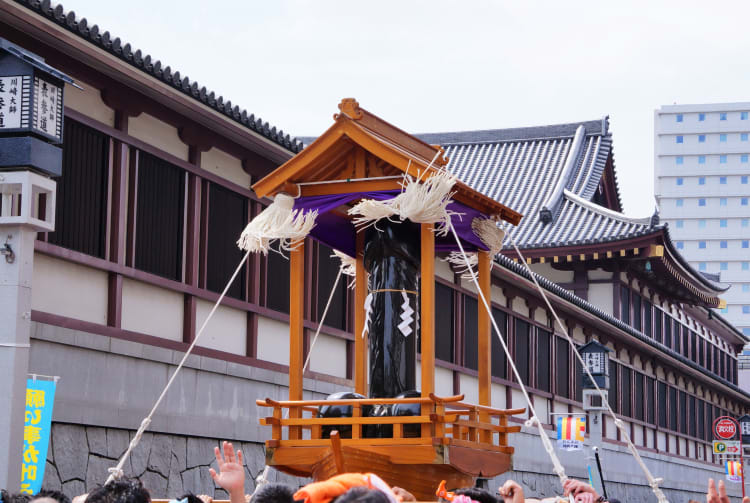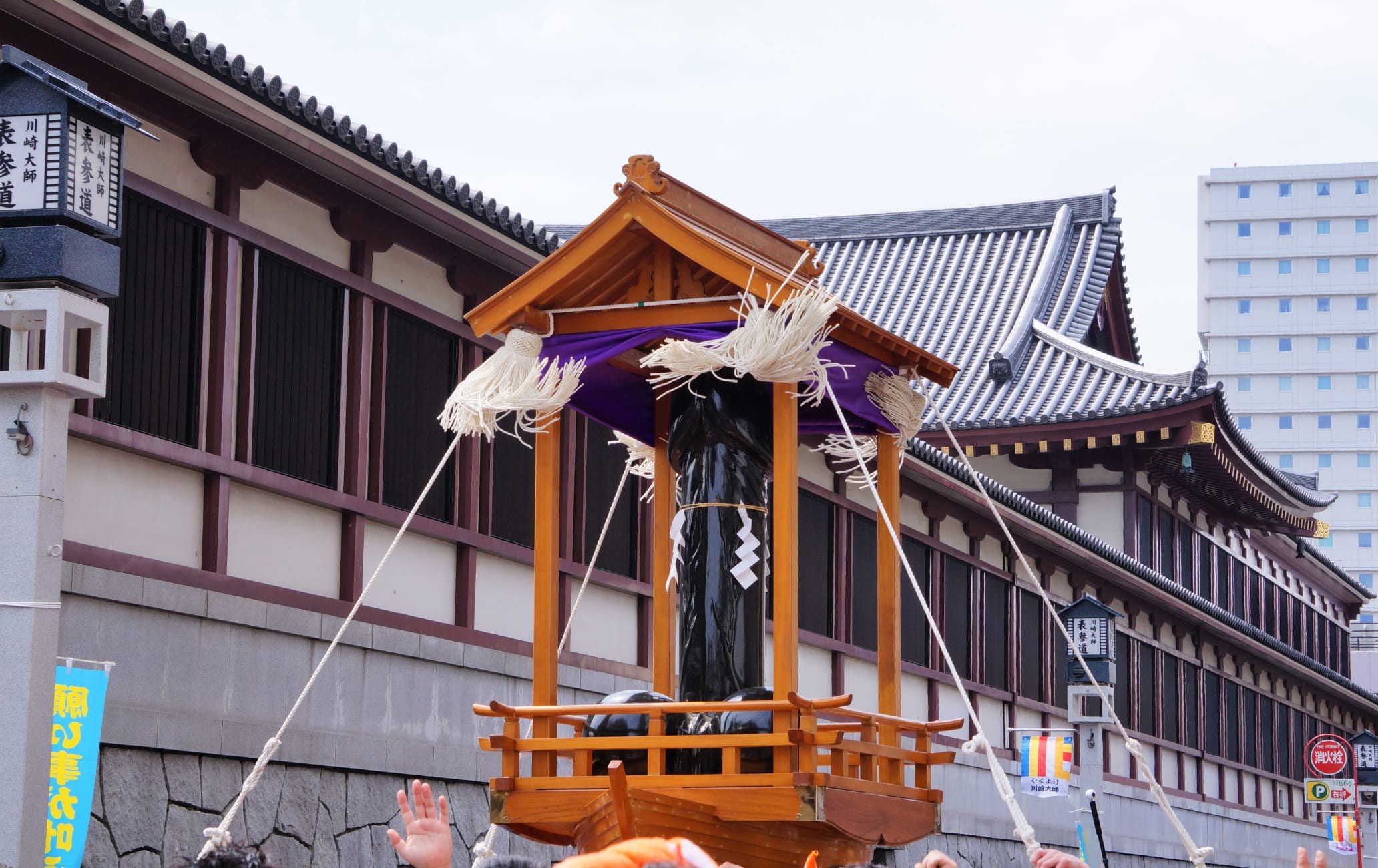A festival where size matters
The Kawasaki Kanamara Festival on the first Sunday of April is one of the most crowded spring festivals in Japan. The festival features three phallic portable shrines, which are cheerfully carried and a variety of food and goods to match the festivities.
Don't Miss
- The boisterous procession of sacred phalluses
- Quirky and unique phallus-themed merchandise and food

How to Get There
The Kanamara Matsuri is held in Kawasaki , which is a short train ride from major Tokyo stations.
Kanayama Shrine, the venue for the festival, is located on the grounds of Wakamiya Hachimangu Shrine, a 2-minute walk from Kawasaki-Daishi Station on the Keihin Express Daishi Line. Kawasaki-Daishi Station is about 15 - 20 minutes from Yokohama Station. It takes around 45 - 50 minutes from Shinjuku on the JR Yamanote and Keihin Express Lines.
Overview
Traditionally, sex workers came to the festival to pray for protection against sexually transmitted diseases. Today, the festival is known as an event that fights against HIV
Also known as the Utamaro Matsuri in reference to Kitagawa Utamaro, an artist who was also famous for his erotic works
The "mara in "Kanamara" originally meant an "obstacle to Buddhist practice" but has become a euphemism for male genitalia
A grand festival with a historical background
This annual spring celebration takes place at Kanayama Shrine. While it's a magnet for international travelers seeking Japan's quirkier side, its historical origins are as fascinating as the modern-day spectacle is amusing.
Deities of metalwork
Kanayama Shrine is dedicated to Kanayamahiko and Kanayamahime, male and female deities who protect the forge. As such, many blacksmiths and metalworking companies are among those who worship at the shrine.
Pray for renewal
The Kanamara Matsuri started up several hundred years ago for local sex workers to pray for protection from diseases and for renewal.
Spreading the faith
Today the festival is famous for the three phallus-shaped mikoshi, or portable shrines, that participants carry in procession. Rather than a focus on the sex industry, the theme has gradually morphed into a more general fertility rite for successful pregnancy and marriage.
In the 1980s, worshippers began coming in hopes of warding off AIDS. This was when the festival's popularity began to spread outside the local area.
Stand at attention
The highlight of the festival is the trio of outlandish erect phalluses carried on portable shrines. The Kanamara Boat Mikoshi contains a phallus made of black iron.

The “Elizabeth” is a pink shaft donated by a drag club in Asakusabashi, and is a symbol of the festival.
The oldest of the three, the Kanamara Omikoshi, is made of wood.
Souvenirs make great icebreakers
There's plenty of themed merchandise available. In the past, there have been phallic candles in assorted colors, phallic candies, funky hand towels, and a host of toys, knickknacks and accessories. You may even find food in the shape of phalluses, such as carved daikon radishes.
Curious but sacred
While the Kanamara Matsuri is a step apart from ordinary life in Japan, the organizers emphasize that the law still applies. While there are rarely problems, security guards are on-hand to deal with lewdness, harassment, and other serious buzzkills. It's important to remember that while fun, the festival has a sacred side too.
While in the neighborhood, stop by Kawasaki Daishi Heikenji Temple's expansive precincts.


























































